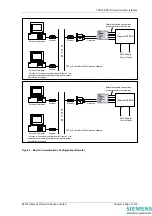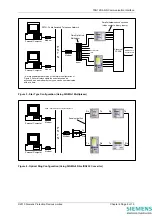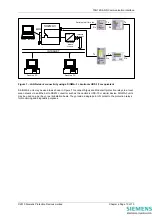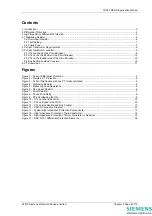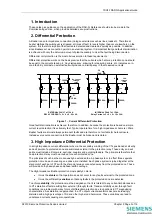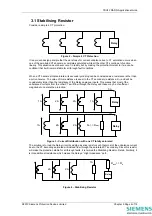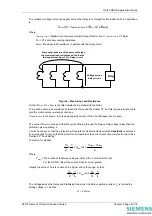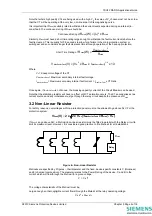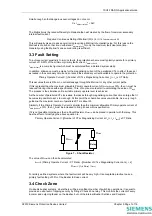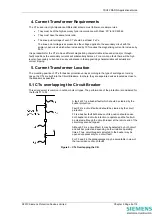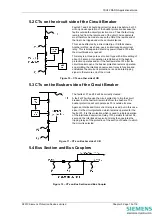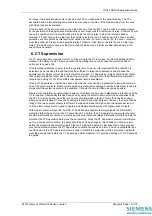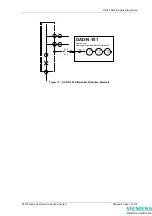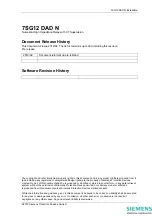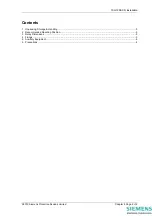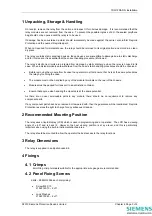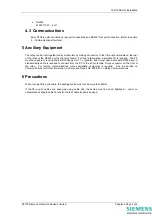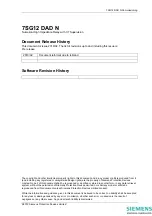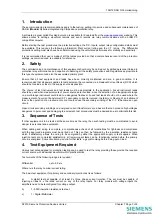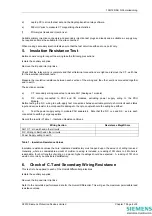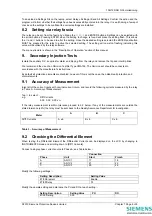
7SG12 DAD N Applications Guide
For these, the ideal arrangement is to have a set of CTs on each side of the circuit breaker. The CTs
associated with a discriminating zone should be mounted on the side of the breaker away from the zone
with which they are associated.
If the two sets of CTs are mounted on one side as shown, then faults F1 and F2 will be correctly cleared
by the operation of the appropriate discrimination zone relays plus the overall check relay. A fault at F3 will
cause the operation of zone discrimination relay plus the check relay to clear the left hand busbar.
However, F3 will continue to be fed from the circuits selected to zone 2 busbar, since the zone 2 busbar
protection will not operate as this fault is just outside its zone. For such a fault at F3, the zone 1 relay will
clear the busbar and reset, so de-energising relay TD before it has time to operate the zone 2 trip relay.
Relay TD must therefore have a setting time of about 0.4 seconds. Similar considerations apply in the
case of Bus Couplers.
6. CT Supervision
If a CT secondary becomes open-circuit, or if the wiring to the CT is broken, a current unbalance will be
created in the Relay circuit. This may exceed the operating level in which case the protection has no
option but to cause a trip.
If the resulting unbalance is lower than the operate level, however, it is important that the condition is
detected since a resulting through fault may be sufficient to raise the unbalanced current above the
operate level. A simple current pick-up is therefore provided, CT Supervision, which should be set higher
than normal unbalance levels due to measuring errors, etc. but lower than the Differential operate level.
Generally a setting of 10% of the Differential operate level is acceptable.
Once a CT Supervision condition has been detected, the relay can be programmed to issue an alarm via
one of the output contacts. Where a mal-operation is preferred to missing a real fault, this alarm is used to
simply alert the system operator to the condition. It should then be rectified as soon as possible.
Where a mal-operation is unacceptable, however, this alarm can be used to disable the protection until the
CT is repaired. Traditionally this has been done by using the alarm to short-circuit the secondaries of all
the CTs for a given phase, since there is no way of telling which is faulty. This method has been used
where an open-circuited CT may cause damage to plant. Care must be taken, however, to ensure that the
rating of the relay output contacts is sufficient to make and break the high current transients involved. If
not, the alarm output must be used to operate a dedicated shorting relay with higher-rated contacts.
With modern numeric relays like the DAD-N, it has become possible to simply disable the Differential
protection rather than short out the CT secondaries. To do this, the CT Supervision alarm output contact
should be externally connected to a status input used to inhibit the relay’s Differential protection elements.
Note that the CT Supervision delay must be set carefully. Since the CT Supervision element will still pick-
up for a genuine fault condition, the delay should be set long enough so that it does not issue an alarm
before the protection has correctly cleared the fault. Setting the delay too low (less than a few seconds)
may cause confusion where the CT Supervision condition is used as an alarm, and an unacceptable race
condition where the CT Supervision alarm is used to disable the protection (will the protection operate to
clear the genuine fault before the CT Supervision alarm disables it ?) Typically a setting of 2 to 10 seconds
is applied.
©2010 Siemens Protection Devices Limited
Chapter 5 Page 11 of 16
Содержание 7SG12 DAD-N
Страница 2: ......

